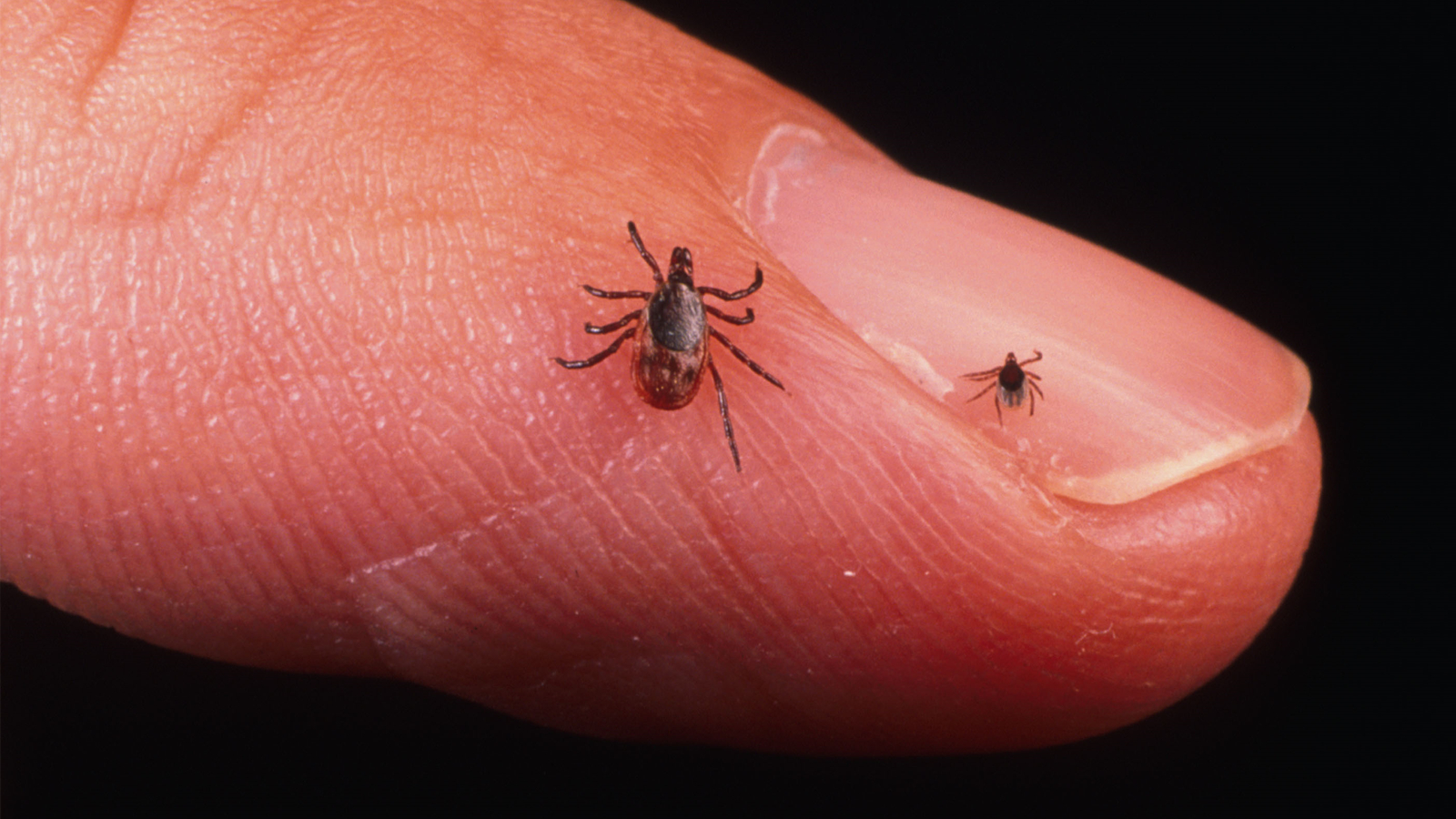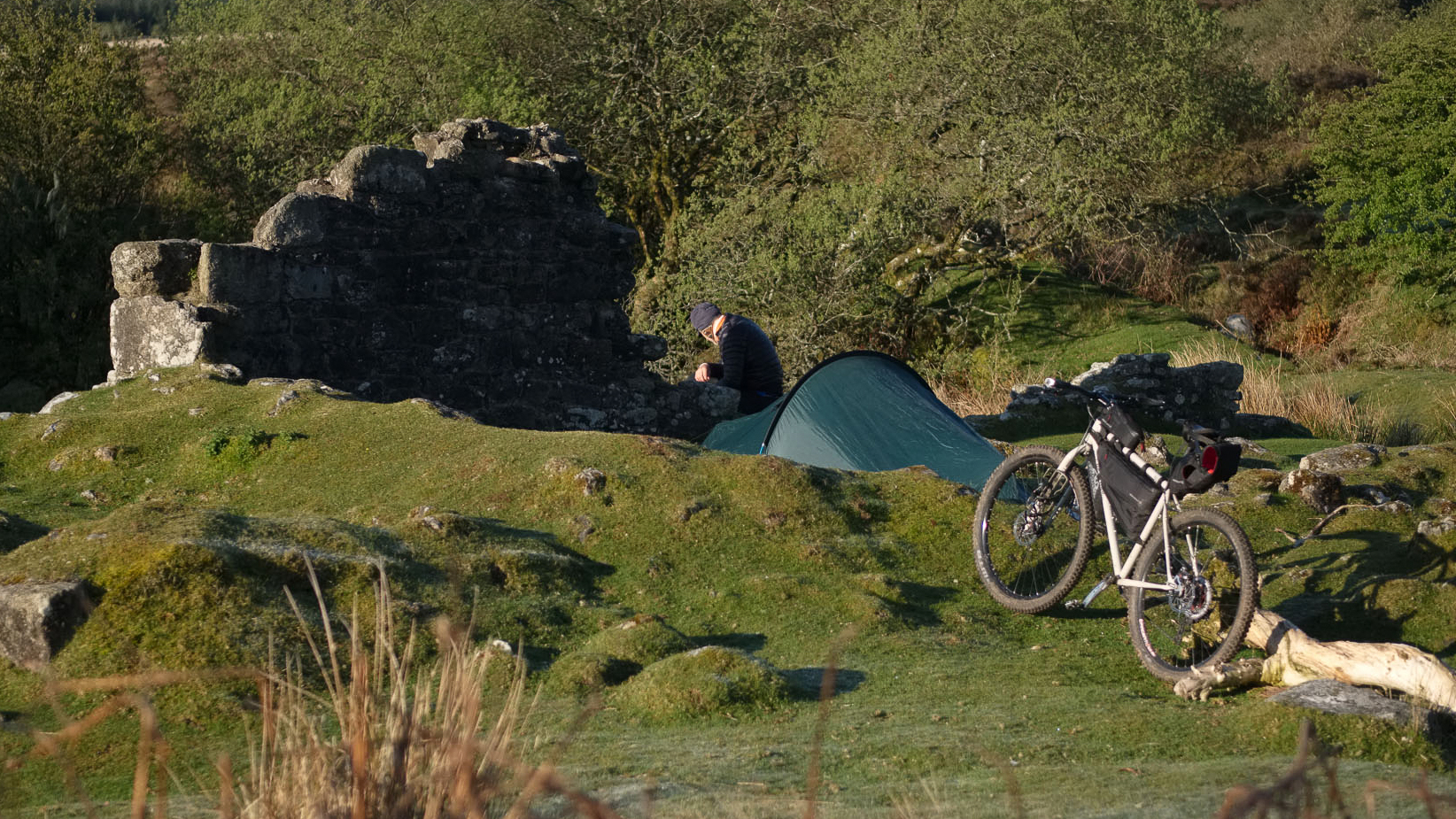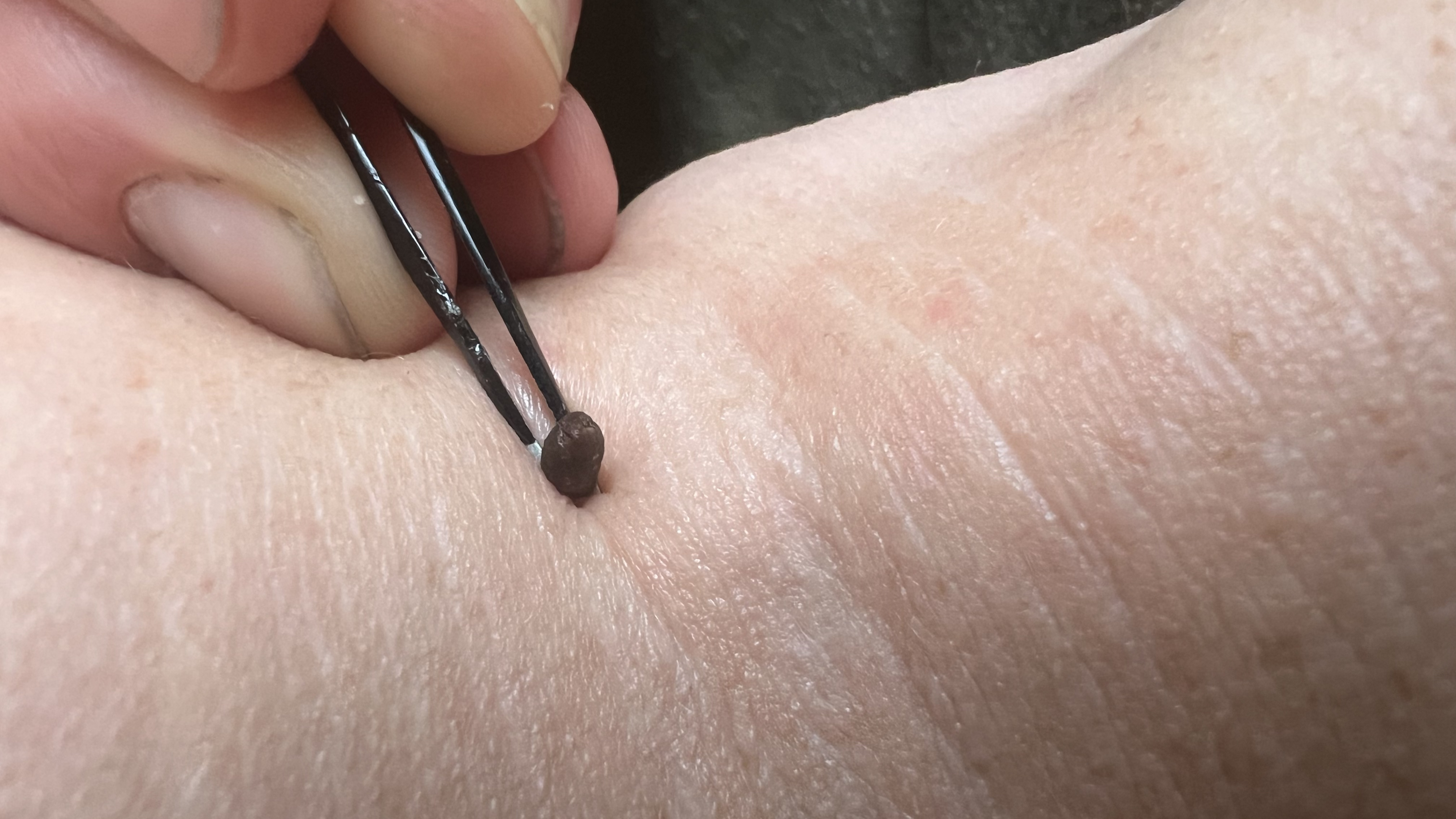
Brambles and nettles can be a pain in summer, but there’s potentially something much nastier hiding in the undergrowth. With a fellow Bike Perfect contributor just out of hospital with Lymes disease, I reckon it’s time for a tick list to hopefully save you from embedded parasite problems.
What are ticks?
You’re welcome to Google a proper anthropomorphic description, but ticks are basically small spidery vampire b*stards with a pointy harpoon on the front end of a round, squishy body. They live in long grass and woodland undergrowth and while they can’t jump or fly, they can 'quest' for anything warm and tasty pushing past. Once aboard the passing blood bank, they then stick their spout in for a bloody feast before bloating out and falling off for a rest and digest. Ticks normally hang out with birds, sheep and deer, but they’ll give anything warm blooded a poke if it’s passing, so mountain bikers and trail dogs are definitely on the menu.

Why are they a problem?
The good news is that most ticks just cause an unpleasant itchy irritation from the anti coagulant they pump into you to keep their blood buffet flowing. However, rising numbers of the increasing amounts of ticks (they love the warmer weather we’re getting now) carry Lymes disease (lyme borreliosis). This is a bacterial infection that can manifest itself as a minor flu, or if untreated develop into much more serious, potentially life changing complications, such as joint swelling and nerve, memory, concentration and heart issues. As I said in the intro, it was enough to send one of our contributors to hospital this week when he suffered sudden partial facial paralysis that checks traced to a Lymes infection at some point. But to really put the shits up you and make you pay attention, a friend and legendary mentor of mine died of a heart attack that was potentially related to untreated Lymes disease when he was a teenager.
If you're riding in Central/Eastern Europe or Central Asia/Russia, there's also a risk of Tick Borne Encephalitis (TBE). This is a viral infection of the central nervous system that can be extremely serious and even fatal in a very small percentage of cases. Thankfully, TBE infections are rare though with an estimated frequency of one case per every 10,000 months of woodland activity. The disease is usually not an issue in the US, UK, France, Italy or Spain, however, a small number of TBE cases have been reported in Britain in recent years.

How to stop them in the first place?
Telling mountain bikers and gravel riders to avoid long undergrowth and woodland is pretty much pointless, but try and avoid rolling round in the grass and bracken as much as possible. Obviously this can be a big issue for wild camping bikepackers who are literally lying in the stuff for hours on end but even if you stop for a snack, keep as far away as you can from undergrowth. If you know you’ve been brushing through prime tick territory then give yourself (and each other) a quick visual tick check whenever you stop as brushing them off before they stick their harpoons in is obviously the optimum.
Wearing trousers and long sleeves obviously limits the amount of bare skin they can grab (but they can still get stuck on fabric). If you do go shorts and short sleeves then get yourself liberally coated in insect repellent.
Whatever you’re wearing, make sure you do a thorough check all over when you stop and in the shower afterwards as ticks love nothing more than the dark, damp and sweaty bits of your body to hang out in. If you suspect you’re ticked up but can’t see for sure, then get a good friend to check. We probably wouldn’t put that request on your Tinder profile though.

Ticked off
If you do get a tick stuck in you, then you need to get it out pronto before the body gets squeezed and potentially injects all sorts of crap into you. The harpoon barbs that keep it stuck in make them a sod to get out though so be careful. DO NOT grab the body or use vaseline or a lighted cigarette to try and drown/burn it off. Use a tick removal tool (available in most outdoor shops and some forward thinking bike shops) or fine pointed tweezers to hold the harpoon, then twist and pull it gently out as you stretch the skin around the puncture site. Sometimes the head parts will snap off which is a bit gross, but isn’t a major issue as they’ll likely just drop out of your skin later.
Soon as the tick is gone, treat the area with an antiseptic and keep an eye out for any swelling or redness. Be aware that this can appear straight away or as long as 90 days after the initial injection, so if you’re forgetful then make a note that you’ve had an unwanted hitchhiker in case you get a ‘mystery’ mark weeks or months later. That means that while ticks are generally more active in the warmer months you still need to be vigilant all year round, as a bite from late summer might not show up until early the following year.
Warning signs
If you do get an infection ring forming near the bite spot (or anywhere else on your body) then get a biro and draw round the edge of it. That way you can check if it’s spreading and get to the doctors ASAP if it is. A raised circle around the bite is another warning sign, as are any flu like symptoms (tiredness / fatigue, muscle or joint (particularly neck) pain, headaches, fevers or chills. Again, these can manifest themselves long after you’ve removed the tick, so keep an eye out for them amidst the general aches and pains of mountain biking life. If you suspect you’ve got Lymes then get yourself to the doctor pronto and explain you’ve been ticked, as the earlier you catch it, the quicker you’re likely to recover. Expect to be prescribed the kind of drain cleaner antibiotics that can make you feel pretty grim though and be sure to take the full course to really kill the infection.
If you share your life with another biker or outdoor enthusiast then keep an eye on them for ticks and Lymes symptoms. Also be aware that dogs and cats are even more prone to picking up the little parasites and bring them home for some domestic questing. Make sure you spread the word to riding buddies or any other outdoor users you know too, as it’s surprising how many people don’t take the dangers of ticks as seriously as they should.







